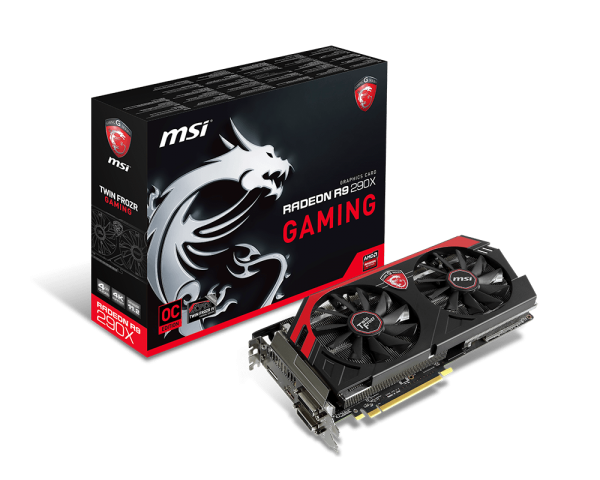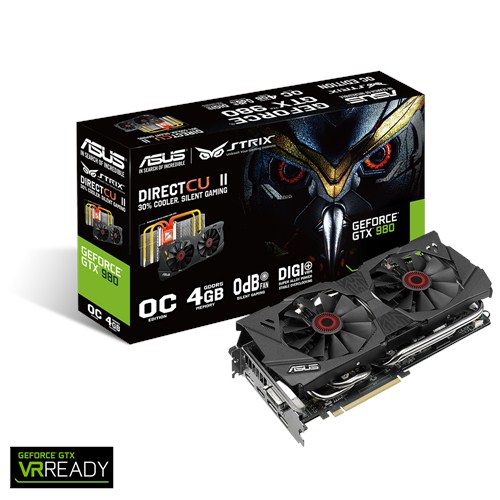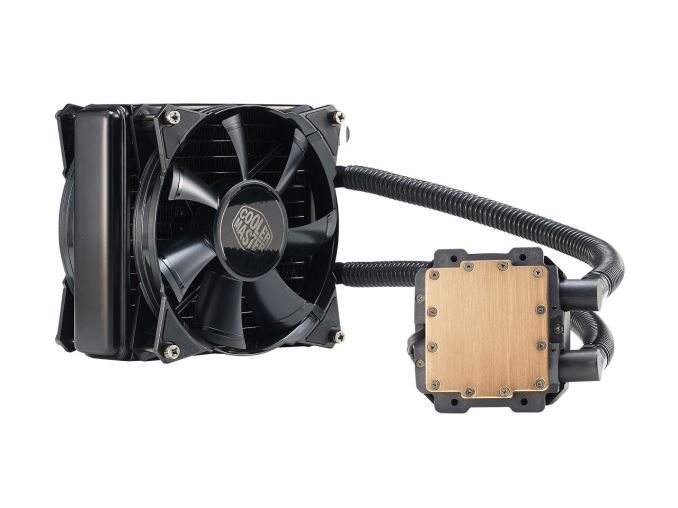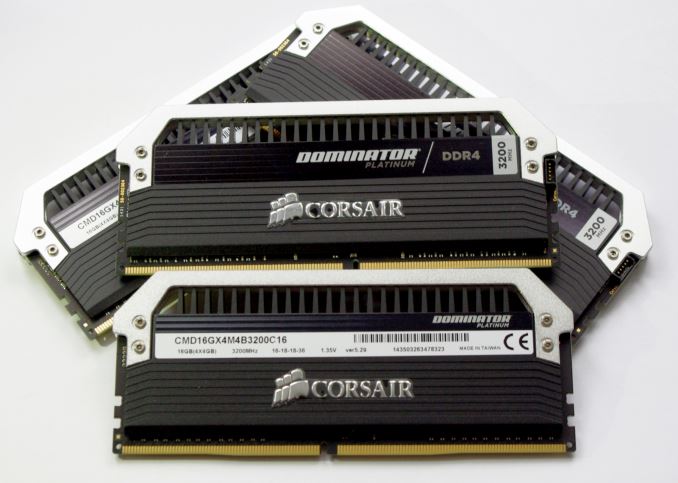AMD Carrizo Part 2: A Generational Deep Dive into the Athlon X4 845 at $70
by Ian Cutress on July 14, 2016 9:00 AM ESTTest Bed and Setup
As per our processor testing policy, we take a premium category motherboard suitable for the socket, and equip the system with a suitable amount of memory running at the manufacturer's maximum supported frequency. This is also typically run at JEDEC subtimings where possible. It is noted that some users are not keen on this policy, stating that sometimes the maximum supported frequency is quite low, or faster memory is available at a similar price, or that the JEDEC speeds can be prohibitive for performance. While these comments make sense, ultimately very few users apply memory profiles (either XMP or other) as they require interaction with the BIOS, and most users will fall back on JEDEC supported speeds - this includes home users as well as industry who might want to shave off a cent or two from the cost or stay within the margins set by the manufacturer. Where possible, we will extend out testing to include faster memory modules either at the same time as the review or a later date.
| Test Setup | |
| Processor | AMD Athlon X4 845: 2M/4T, 3.5 GHz, 65W, Carrizo Cores AMD Athlon X4 860K: 2M/4T, 3.7 GHz, 95W, Kaveri Cores AMD Athlon X4 760K: 2M/4T, 3.8 GHz, 100W, Richland Cores AMD Athlon X4 750K: 2M/4T, 3.4 GHz, 100W, Trinity Cores |
| Motherboards | ASUS A88X-Pro |
| Cooling | Cooler Master Nepton 140XL |
| Power Supply | Antec 1200W High Current Pro |
| Memory | GeIL Super Veloce 2x8GB DDR3-2400 C11 Kit |
| Memory Settings | JEDEC @ 2133 C10 for X4 845 JEDEC @ 1866 C9 for X4 860K/X4 760K/X4 750K |
| Video Cards | ASUS GTX 980 Strix 4GB MSI R9 290X Gaming 4G MSI GTX 770 Lightning 2GB MSI R9 285 Gaming 2G ASUS R7 240 2GB |
| Hard Drive | Crucial MX200 1TB |
| Optical Drive | Viewsonic VX2270XMH-LED 22-inch FHD |
| Case | Open Test Bed |
| Operating System | Windows 7 64-bit SP1 |
Many thanks to...
We must thank the following companies for kindly providing hardware for our multiple test beds. Some of this hardware is not in this test bed specifically, but is used in other testing.
Thank you to AMD for providing us with the R9 290X 4GB GPUs. These are MSI branded 'Gaming' models, featuring MSI's Twin Frozr IV dual-fan cooler design and military class components. Bundled with the cards is MSI Afterburner for additional overclocking, as well as MSI's Gaming App for easy frequency tuning.
The R9 290X is a second generation GCN card from AMD, under the Hawaii XT codename, and uses their largest Sea Islands GPU die at 6.2 billion transistors at 438mm2 built at TSMC using a 28nm process. For the R9 290X, that means 2816 streaming processors with 64 ROPs using a 512-bit memory bus to GDDR5 (4GB in this case). The official power rating for the R9 290X is 250W.
The MSI R9 290X Gaming 4G runs the core at 1000 MHz to 1040 MHz depending on what mode it is in (Silent, Gaming or OC), and the memory at 5 GHz. Displays supported include one DisplayPort, one HDMI 1.4a, and two dual-link DVI-D connectors.
Further Reading: AnandTech's AMD R9 290X Review
Thank you to ASUS for providing us with GTX 980 Strix GPUs. At the time of release, the STRIX brand from ASUS was aimed at silent running, or to use the marketing term: '0dB Silent Gaming'. This enables the card to disable the fans when the GPU is dealing with low loads well within temperature specifications. These cards equip the GTX 980 silicon with ASUS' Direct CU II cooler and 10-phase digital VRMs, aimed at high-efficiency conversion. Along with the card, ASUS bundles GPU Tweak software for overclocking and streaming assistance.
The GTX 980 uses NVIDIA's GM204 silicon die, built upon their Maxwell architecture. This die is 5.2 billion transistors for a die size of 298 mm2, built on TMSC's 28nm process. A GTX 980 uses the full GM204 core, with 2048 CUDA Cores and 64 ROPs with a 256-bit memory bus to GDDR5. The official power rating for the GTX 980 is 165W.
The ASUS GTX 980 Strix 4GB (or the full name of STRIX-GTX980-DC2OC-4GD5) runs a reasonable overclock over a reference GTX 980 card, with frequencies in the range of 1178-1279 MHz. The memory runs at stock, in this case 7010 MHz. Video outputs include three DisplayPort connectors, one HDMI 2.0 connector and a DVI-I.
Further Reading: AnandTech's NVIDIA GTX 980 Review
Thank you to Cooler Master for providing us with Nepton 140XL CLCs. The Nepton 140XL is Cooler Master's largest 'single' space radiator liquid cooler, and combines with dual 140mm 'JetFlo' fans designed for high performance, from 0.7-3.5mm H2O static pressure. The pump is also designed to be faster, more efficient, and uses thicker pipes to assist cooling with a rated pump noise below 25 dBA. The Nepton 140XL comes with mounting support for all major sockets, as far back as FM1, AM2 and 775.
Further Reading: AnandTech's Cooler Master Nepton 140XL Review
Thank you to Corsair for providing us with an AX1200i PSU. The AX1200i was the first power supply to offer digital control and management via Corsair's Link system, but under the hood it commands a 1200W rating at 50C with 80 PLUS Platinum certification. This allows for a minimum 89-92% efficiency at 115V and 90-94% at 230V. The AX1200i is completely modular, running the larger 200mm design, with a dual ball bearing 140mm fan to assist high-performance use. The AX1200i is designed to be a workhorse, with up to 8 PCIe connectors for suitable four-way GPU setups. The AX1200i also comes with a Zero RPM mode for the fan, which due to the design allows the fan to be switched off when the power supply is under 30% load.
Further Reading: AnandTech's Corsair AX1500i Power Supply Review
Thank you to Crucial for providing us with MX200 SSDs. Crucial stepped up to the plate as our benchmark list grows larger with newer benchmarks and titles, and the 1TB MX200 units are strong performers. Based on Marvell's 88SS9189 controller and using Micron's 16nm 128Gbit MLC flash, these are 7mm high, 2.5-inch drives rated for 100K random read IOPs and 555/500 MB/s sequential read and write speeds. The 1TB models we are using here support TCG Opal 2.0 and IEEE-1667 (eDrive) encryption and have a 320TB rated endurance with a three-year warranty.
Further Reading: AnandTech's Crucial MX200 (250 GB, 500 GB & 1TB) Review
Thank you to G.Skill for providing us with memory. G.Skill has been a long-time supporter of AnandTech over the years, for testing beyond our CPU and motherboard memory reviews. We've reported on their high capacity and high-frequency kits, and every year at Computex G.Skill holds a world overclocking tournament with liquid nitrogen right on the show floor. One of the most recent deliveries from G.Skill was their 4x16 GB DDR4-3200 C14 Kit, which we are planning for an upcoming review.
Further Reading: AnandTech's Memory Scaling on Haswell Review, with G.Skill DDR3-3000
Thank you to Corsair for providing us with memory. Similarly, Corsair (along with PSUs) is also a long-time supporter of AnandTech. Being one of the first vendors with 16GB modules for DDR4 was a big deal, and now Corsair is re-implementing LEDs back on its memory after a long hiatus along with supporting specific projects such as ASUS ROG versions of the Dominator Platinum range. We're currently looking at our review pipeline to see when our next DRAM round-up will be, and Corsair is poised to participate.
Further Reading: AnandTech's Memory Scaling on Haswell-E Review

















131 Comments
View All Comments
lefty2 - Thursday, July 14, 2016 - link
I'm predicting Bristol Ridge will be just as bad a failure as Carrizo. I.e. the few design wins will only have single DIMM memory and be universally unavailable, buried somewhere in a dark corner of the OEM's website. It's a pity, because both SoCs are very good in their own right.nandnandnand - Thursday, July 14, 2016 - link
If it's not Zen, it can be thrown straight in the garbage.Samus - Friday, July 15, 2016 - link
I still rock a few Kaveri desktops and they are incredibly powerful for the price. The 860K is half the cost of a comparable Intel chip, which supporting faster memory and a lower cost platform.Carizo on the desktop is an anomaly. I'd like to see what it could do with 4MB cache (would require an entirely new die)
Lolimaster - Saturday, July 16, 2016 - link
They were nice in 2014.We should have a nice 20nm 768SP APU in 2015 with a full L2 cache Excavator and fully mature 896SP 20nm early this year.
Remember the A8 3870K? That APU was a damn monster only hold back from being godly cause of their sub 3Ghz cpu speed, what we had after?
400SP VLIW5 2011 --> 384 VLIW4 2012 --> 384VLIW4 2013 --> 512SP GCN 2015 --> 512SP GCN 2016
Intel improved way faster (non "e" + edram igp's are near A8 level from being utter trash when the A8 3850 was release).
The_Countess - Tuesday, July 19, 2016 - link
yes being able to thrown in a extra billion transistors compared to AMD (1.7 vs 0.75 billion transistors for a quad core with GPU) because of 14nm really does help intel along a lot.but as nobody has been able to make a 20nm class process for anything but flash and ram besides intel, AMD's hands were tied. there is nothing AMD could have done to change that.
BlueBlazer - Friday, July 15, 2016 - link
Formula for failure: FM2 socket (with limited CPU upgradeability), only PCI Express x8 lanes available (which can bottleneck GPUs), and only "4 cores" (which performs more like 2C/4T Core i3 processor).neblogai - Friday, July 15, 2016 - link
Bristol Ridge is not FM2; PCI-E x8 can not bottleneck midrange GPUs; ultra low power mobile APU also sold as desktop chip is not a failure, just additional revenueBlueBlazer - Friday, July 15, 2016 - link
The results in the article shows otherwise, where AMD's Bristol Ridge was slower in most gaming tests, despite having better performance in some applications. Both FM2 and FM2+ are still the same (legacy) socket. AMD will be probably selling these chips at a loss. Note that these are the same (large) dies as Carrizo chips, and at 250mm^2 coupled with low prices typically meant razor thin margins or none at all.silverblue - Friday, July 15, 2016 - link
That L2 cache is probably making more difference than you realise.evolucion8 - Saturday, July 16, 2016 - link
The PCI-E is busted, even at PCI E 2.0 @ 4X, it barely makes a difference on the Fury X and the GTX 980 Ti.